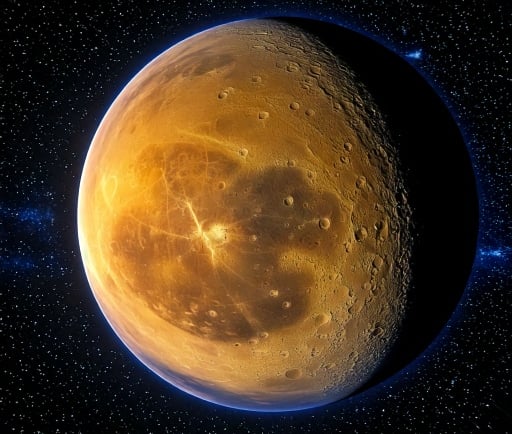Within the Proxima Centauri C: Insights into a Super-Earth Exoplanet


Introduction to Proxima Centauri C
In the vastness of the cosmos, the search for exoplanets continues to intrigue astronomers and astrophysicists alike. Among the numerous candidates in this cosmic lottery is Proxima Centauri C, a fascinating super-Earth-like planet that orbits Proxima Centauri, the closest star system to our own. With a mass around seven times that of Earth, Proxima Centauri C presents a unique opportunity to study the characteristics and potential habitability of exoplanets.
Characteristics of Proxima Centauri C
Located just over four light-years from Earth, Proxima Centauri C is classified as a super-Earth due to its substantial mass. This classification indicates that, despite its size, it shares some similarities with Earth. However, the planet's orbit is positioned far beyond the habitable zone, the region where conditions are suitable for liquid water to exist. Consequently, Proxima Centauri C is unlikely to harbor life as we know it.
The characteristics of this world remain largely speculative, as very little direct observation has been conducted. Its significant mass raises questions about its geological activity, potential atmosphere, and surface conditions. The knowledge we have mostly hinges on astronomical models and indirect observations, which suggest a rocky composition similar to that of its terrestrial cousin, Earth.
The Challenges of Habitability
While the prospect of discovering new worlds is exhilarating, Proxima Centauri C presents a challenging case for habitability. Situated outside of the habitable zone, the planet experiences harsh conditions that are not conducive to the development or sustenance of life. The intense radiation emitted by its host star, a red dwarf, coupled with its greater distance from the ideal conditions for liquid water, makes Proxima Centauri C an unlikely candidate for life. Furthermore, the volatile environment of a super-Earth raises further questions about whether any form of life could thrive there.
A critical aspect of future explorations will involve studying the atmosphere, if present, of Proxima Centauri C. Current scientific missions aim to delve deeper into the characteristics of such exoplanets, which could provide unprecedented insights into the dynamics of planetary environments in star systems beyond our own.
Conclusion: The Importance of Understanding Proxima Centauri C
The exploration of Proxima Centauri C plays a vital role in broadening our understanding of planetary formation and the potential for diverse types of worlds in the universe. Even though it stands as an unlikely candidate for habitability, research on super-Earths like Proxima Centauri C fuels our knowledge of planetary science and exoplanetary systems. As we continue to refine our observational technologies and theoretical models, the mysteries surrounding this intriguing exoplanet may soon reveal their answers, enriching the ever-evolving narrative of our universe.
